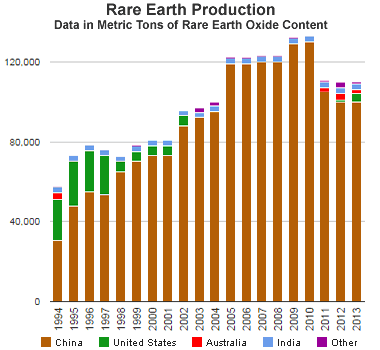Grab your ice skates, everyone, because Hell just froze over.
For the first time ever, Apple is encouraging its competitors to copy one of its innovations.
Unlike other Silicon Valley giants (such as my own personal superhero on Earth, Elon Musk), Apple has consistently remained very “hush-hush” about its ideas and technological strategies.
Elon Musk is trying to colonize new planets and improve our current one, while Apple is usually just toeing the lines between phone, tablet, and “phablet.”
Elon welcomes the insight of many great minds in order to achieve his goals more quickly and efficiently, while profit-driven Apple is all about the bottom dollar.
It makes sense for a tech company based solely on consumer products, right? Apple couldn’t make its money if everyone could replicate the iPhone.
(We can’t hate on Apple too much — it is the largest company to ever exist, and I do love my iPhone.)
Still, I was incredibly surprised when I caught wind of Liam, Apple’s new “disassembly robot.”
The technology behind Liam is still fairly new and not yet ready for mass utilization, but the future possibilities are endless.

As the company mentions in a recent video clip in which it reveals this new innovation, “In a world with limited resources, some things can’t be replaced.”
It’s talking about rare earth elements, what the Japanese call “seeds of technology”:
- Lanthanum
- Praseodymium
- Cerium
- Neodymium
- Samarium
- Promethium
- Europium
- Dysprosium
- Holmium
- Gadolinium
- Terbium
- Thulium
- Scandium
- Yttrium
- Erbium
- Ytterbium
- Lutetium
In reality, these elements and metals aren’t actually rare. In fact, they are relatively common throughout our planet. They are also often found in conjunction with each other, and separation can prove even more difficult than the initial discovery.
The difficulty is finding concentrated quantities significant enough to support extraction in an economically viable way.
But here’s the thing…
These rare earths are essential, and I mean essential, to our everyday technology (along with other critical resources like lithium, copper, platinum, etc.).
According to the 2013 Worldwide Threat Assessment of the National Intelligence Office, rare earths are “essential to civilian and military technologies and to the 21st-century global economy, including green technologies (e.g., wind turbines and advanced battery systems) and advanced defense systems.”
In North America alone, more than $329 billion in economic output is dependent on rare earth elements.
Take just the iPhone for example. Every unit uses a combination of eight different elements for everything from its colored screen to its speakers to the miniaturization of the phone’s circuitry.
Thin, cheap solar panels need tellurium, which makes up a scant 0.0000001% of the earth’s crust, making it three times rarer than gold.
Several pounds of rare earth compounds are in batteries that power every electric vehicle (EV) and hybrid-electric vehicle.
“Rare earth availability is a serious problem as the EV market grows, though I’m not seeing much consternation about it yet. We could be trading dependence on one commodity, foreign oil, for another, rare earth metals.” — Mike Crane, Operator of EV and Hybrid Global Parts Supplier

Crane is referring to the fact that China, for the past several years, has maintained an astounding monopoly, accounting for more than 85% of the world’s rare earth metal production, followed by the U.S., Russia, India, Australia, and others. Being the largest consumer of these metals as well, China accounts for a massive share of more than 95% in the global market for rare earth metals.

All of these factors create significant concerns regarding economic dependence and supply issues, particularly alarming for a resource that is so critical for the future of technology and renewable energies.
Urban Mining
Enter: Apple and the e-waste revolution.
“It’s clear Apple doesn’t want to keep Liam a secret any longer. Its presence goes beyond the mysterious warehouse near Cupertino, with Apple’s aspirations to inspire and motivate other tech companies to take a similar responsible recycling approach… its existence could mark the beginning of a major shift in how products are built, used, broken down and recycled into brand-new products.” — Mashable
Liam is a quintessential example of a “two birds, one stone” innovation.
According to DoSomething.org, 20 to 50 million metric tons of waste from gadgets are disposed annually. In the U.S. alone, waste from electronics represents 2% of trash in landfills, but it’s responsible for 70% of its toxic waste.
Should Liam manage to operate at a larger scale, the technology has the potential to alleviate the burden of that toxic damage, which is especially harmful in developing areas.

However, Liam could also open up doors for recycling rare earth elements from those millions of disposed devices, essentially freeing the rest of the world from dependence on China.
Again, Liam is still in his infancy. But Apple is optimistic and will continue to share this technology with the rest of the world.
Who knows? Its open-source stance on Liam could knock down the barriers to widespread green technology, electric cars, and more.
{$custom_ptt_jessica_signoff}